Do you need a better way to nurture your Instagram following? Do you want to avoid paying for customer acquisition?
In this article, you’ll discover how to use organic Instagram content to convert followers into customers, one step at a time.
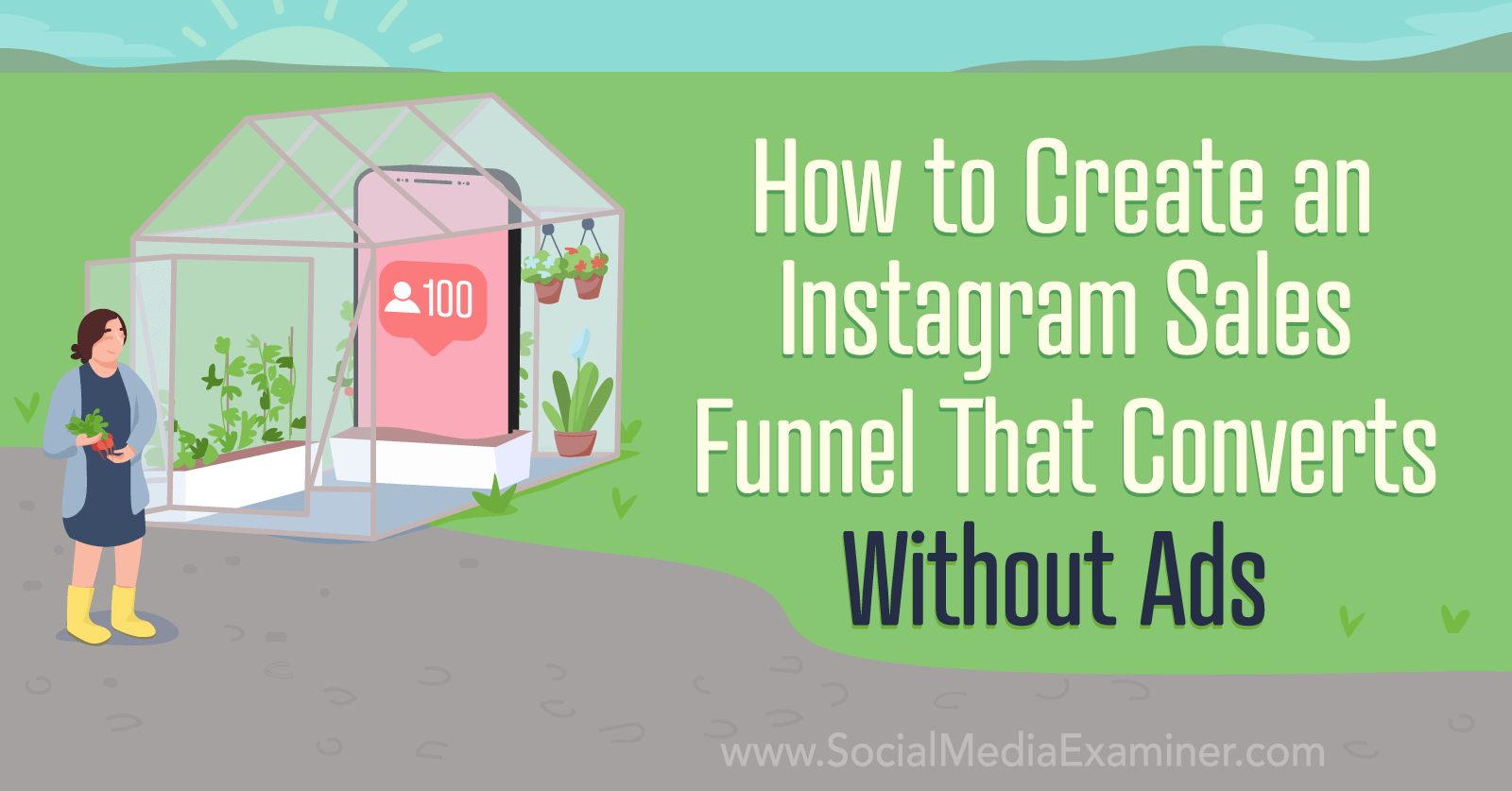
#1: Set Up Your Instagram Sales Channels
A successful Instagram sales funnel starts with a solid foundation. With audience research and mobile-optimized sales channels, you can add prospects to your funnel and convert them efficiently.
Whether your business sells products or services, Instagram has built-in options you can use to generate leads and sales. For eCommerce products, Instagram shops often work best. With an Instagram shop, you can add a View Shop action button to your Instagram profile. Then you can drive sales directly by tagging products in posts, reels, and stories.
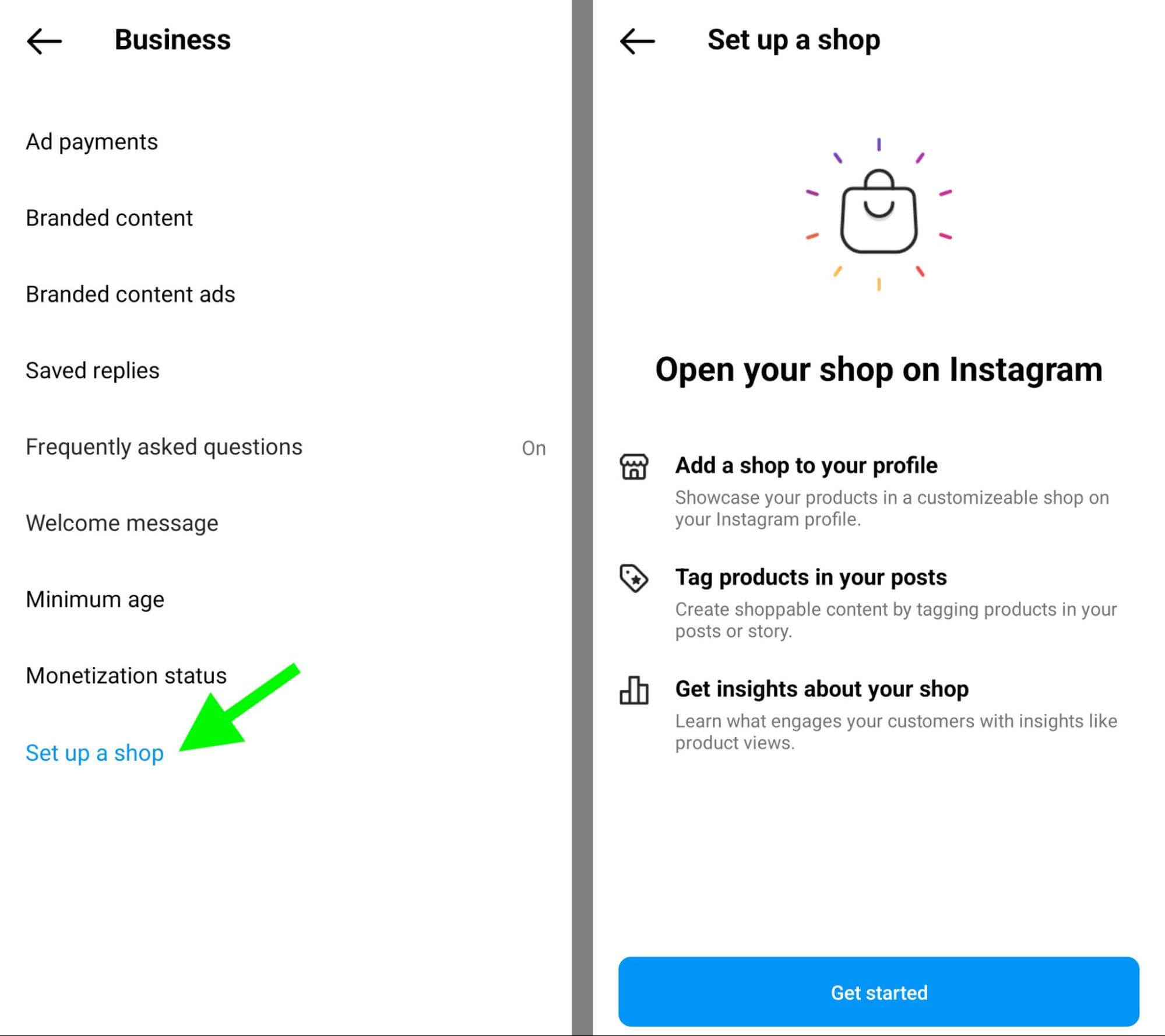
Because Instagram shops are designed for physical products rather than digital products or any type of service, they won’t work for every business. If your business sells digital products, use your Instagram bio link to direct customers to your mobile-optimized landing page. With third-party tools like Linktree or Linkpop, you can make your landing page shoppable.
If you’re a service-based business, add one of Instagram’s action buttons to your profile. For example, you can use the Book Now button to get more appointments on your calendar or the Reserve button to fill up your restaurant’s available tables. You can also use the Get Quote button to generate leads directly on Instagram.

Note that appointment and reservation action buttons require an integration with one of Instagram’s partner platforms. You can see a full list of approved apps by selecting the action button and scrolling through the partners. Instagram’s lead generation action button doesn’t link to third-party apps but it does require you to set up an in-app form.
Map Existing Instagram Content to Sales Funnel Stages
Once you have sales channels in place, you need to know your best options for guiding prospects to them. Instagram offers some helpful tools for getting to know your audience and learning what works best for them.
Does your Instagram content already generate a ton of engagement and conversions? Check your Instagram account insights to see what drives the most results. For upper-funnel insights, look for engagement metrics like comments and shares. For lower-funnel insights, look for conversion metrics like link sticker taps, product views, and button taps.
Not sure what would encourage your audience to purchase? Using post captions, poll stickers, or question stickers, ask your audience what kind of content they want to see. For example, you can ask which product they’d like to see in a demonstration or get input on which new feature you should launch next.
Your brand’s buyer persona or ideal customer profile can also help your team create content that resonates and gets results. Keep in mind that audiences may vary a bit from platform to platform. To get an accurate picture of your brand’s Instagram followers, check your account insights.
You can check audience insights by navigating to your Instagram profile and opening your professional dashboard. Then open your account insights and tap to view the Total Followers panel. Adjust the timeframe as necessary and scroll to see follower demographics like age, gender, and location.

#2: Instagram Sales Funnels Stage 1: Content to Increase Brand Awareness
Now you’re ready to build the top of the funnel. To get prospects in your Instagram sales funnel, focus on driving discovery and increasing brand awareness.
Educational and Entertaining Content
It’s tempting to skip ahead and start selling to your audience with shoppable posts and conversion-focused calls to action (CTAs). But keep in mind that the top of the sales funnel aligns with the beginning of the customer journey. People at this stage aren’t ready to make a purchase decision and probably won’t respond to a hard sell.
Get World-Class Marketing Training — All Year Long!
Are you facing doubt, uncertainty, or overwhelm? The Social Media Marketing Society can help.
Each month, you’ll receive training from trusted marketing experts, covering everything from AI to organic social marketing. When you join, you’ll also get immediate access to:
- A library of 100+ marketing trainings
- A community of like-minded marketers
- Monthly online community meetups
- Relevant news and trends updates
Instead, create content that helps new prospects get to know your brand and learn about your products and services. For example, entertaining content can respond to current trends or show the human side of your brand. Educational content can show prospects how to use your products or highlight key features of your services.
For example, the @misfitsmarket post below features a short guide to making soup. Since the retailer specializes in organic produce, the post seamlessly educates prospects about the brand’s offerings and potential use cases without being salesy. Neither the caption nor the creative has a conversion-focused CTA; instead, both deliver helpful information.
Instagram Tools for Driving Discovery
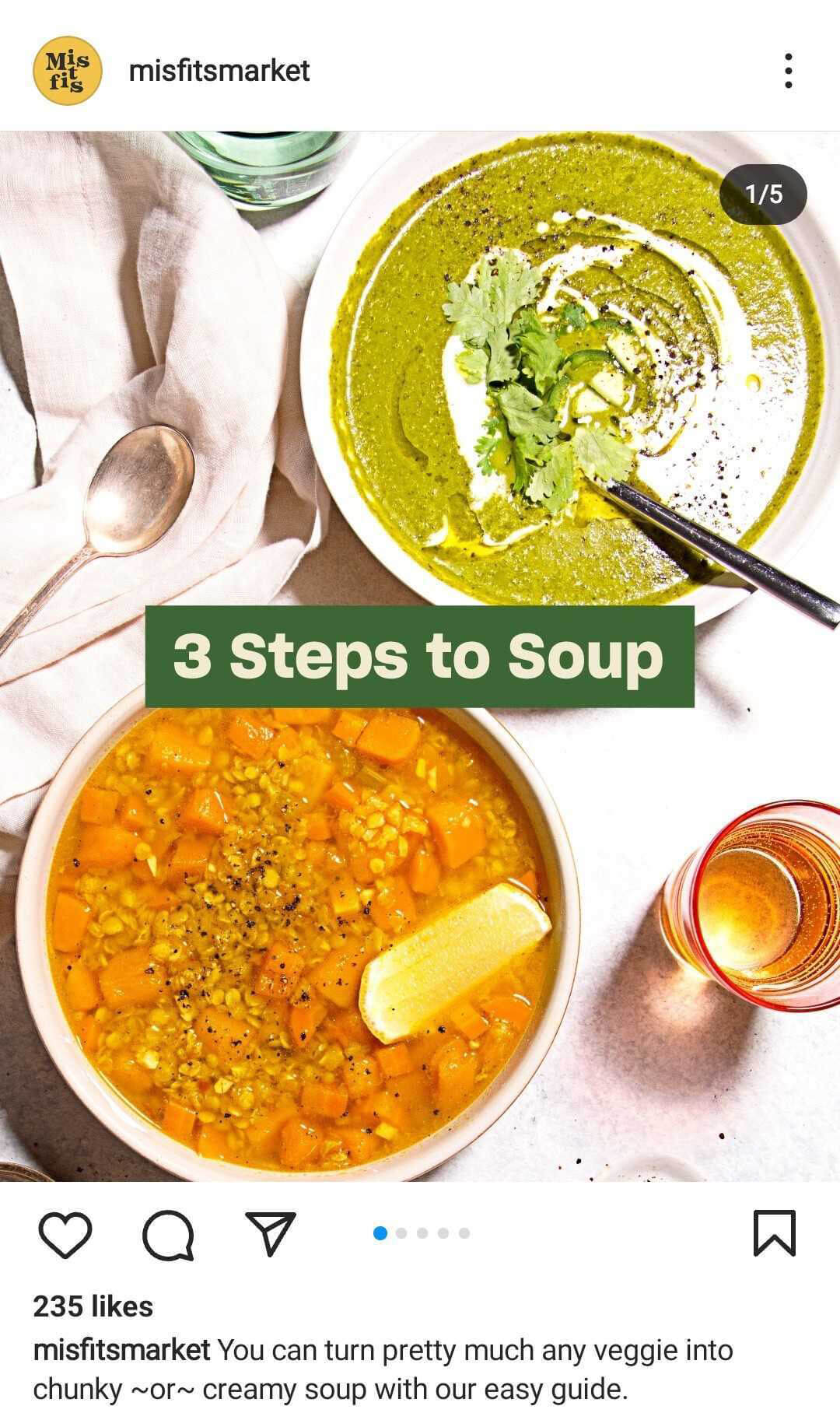
By driving discovery, you can attract more followers, introduce more of your target audience into your funnel, and build your brand on Instagram. First and foremost, create content that resonates with your audience and that aligns with the Instagram algorithm.
No matter which top-of-funnel content ideas you run with, remember that Instagram typically prioritizes content that’s both engaging and relevant. If you consistently create high-performing content, Instagram is more likely to recommend it to a wider audience in the feed, on Explore, and on hashtag pages.
Figuring out what kind of content your audience likes doesn’t have to be difficult. Use your Instagram insights to find top-performing posts, reels, and Instagram stories. The in-app content report automatically sorts everything you’ve published by reach so you can easily pinpoint what kind of content Instagram is recommending.
To find your most viral content, filter the in-app content report by shares. To get more granular, select a content type (i.e., Reels) and pick from the much longer lists of metrics.

You can also use content insights to assess how people are finding your content including reach metrics for Explore, the feed, and hashtags.
When you publish top-of-funnel content, you can maximize its value by using tools to improve visibility. For example, adding branded and niche hashtags can help your content display at the top of hashtag pages and in hashtag feeds—with one caveat. Instagram typically recommends content that’s already proven to perform well with your core audience.
Instagram’s in-app collaboration tools give you even more options to get your brand on new prospects’ radar. Consider partnering with complementary brands or content creators to reach new audiences. With the platform’s Invite Collaborator option, you can cross-post content to your brand’s feed and your partner’s feed to increase reach.
#3: Instagram Sales Funnels Stage 2: Content to Encourage Shoppers to Consider a Purchase
Once you’re on prospects’ radar, it’s time to start giving them reasons to consider a purchase. With the right middle-of-funnel content and tactics, you can guide prospects toward a buying decision, again without appearing salesy.
Product Specs and Demos
When creating educational content for top-of-funnel prospects, it’s usually best to provide broad overviews of key benefits and brand concepts. But when you want to appeal to middle-of-funnel prospects, it’s better to be much more detailed.
Middle-of-funnel prospects are likely to respond to content that covers product specs or shares in-depth product demos. Prospects at this funnel stage can also get a ton of value from content that compares your products and services against each other or to the competition.
For example, the @evernote post below appeals to Android users who are considering subscribing to the note-taking app. The carousel post provides tons of details about Evernote’s features and functionality that Android users can access. To drive further consideration, the post includes a CTA encouraging prospects to visit the brand’s blog.
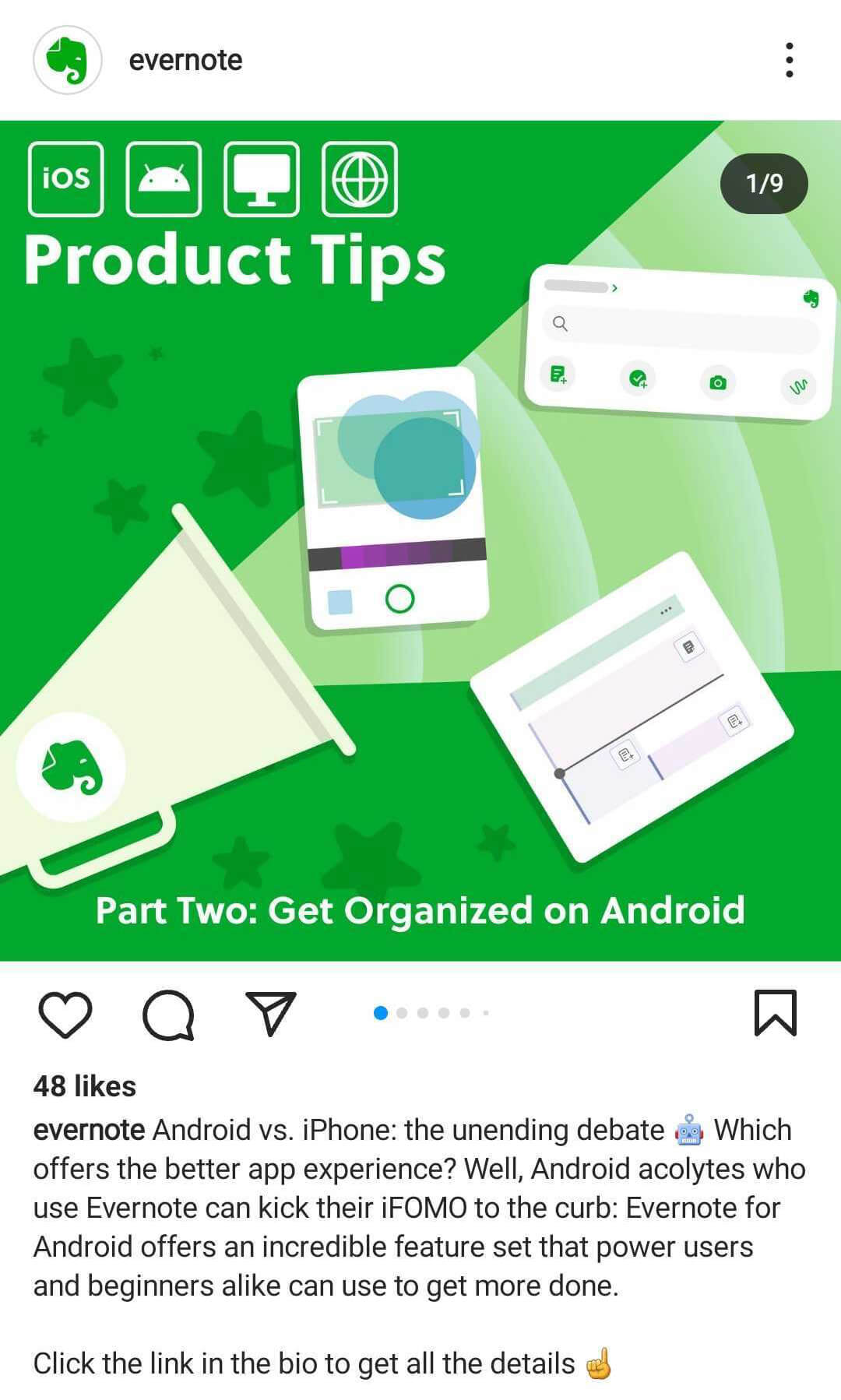
High-Value Lead Magnets and Exclusive Content
When you share in-demand data like product specs and service features, you’ll probably want to make the information publicly accessible like @evernote has above. But when you want to turn prospects into leads, gated content (also called lead magnets) is often better.

Discover Proven Marketing Strategies and Tips
Want to go even deeper with your marketing? Check out the Social Media Marketing Podcast! Publishing weekly since 2012, the Social Media Marketing Podcast helps you navigate the constantly changing marketing jungle, with expert interviews from marketing pros.
But don’t let the name fool you. This show is about a lot more than just social media marketing. With over 600 episodes and millions of downloads each year, this show has been a trusted source for marketers for well over a decade.
Gated content offers an even exchange—a valuable resource for prospects’ contact details. As a result, they benefit both your brand and your prospects.
Because it requires users to opt into communication from your brand, gated content only appeals to prospects who are actively considering a purchase. Because lead magnets include exclusive, high-value information, they can be ideal for converting leads.
For example, in the @mirohq story below, the collaboration platform highlights a series of key findings from a new white paper. The findings showcase benefits that are likely to capture the attention of serious prospects such as substantial savings for platform users. Rather than sharing all of the details in the story, @mirohq links out to gated content.

Customer Lists and DM Tactics
Another way to encourage consideration is to invite customers into conversations with your team. Comments are a good start but they’re difficult to track and tend to lose relevance quickly. In contrast, DM conversations can span multiple topics, tap into customized recommendations, and open up opportunities to convert prospects.
You can easily transition a promising comment-based conversation to DMs by tapping Message instead of Reply under the comment. Alternatively, you can offer exclusive resources, promo codes, or even free samples in your Instagram posts, reels, or stories, and then invite prospects to DM you to get access.
To keep track of prospects, use Instagram’s in-app labels to organize your DMs. For example, you can flag conversations for follow-up or mark customers who have booked a service.
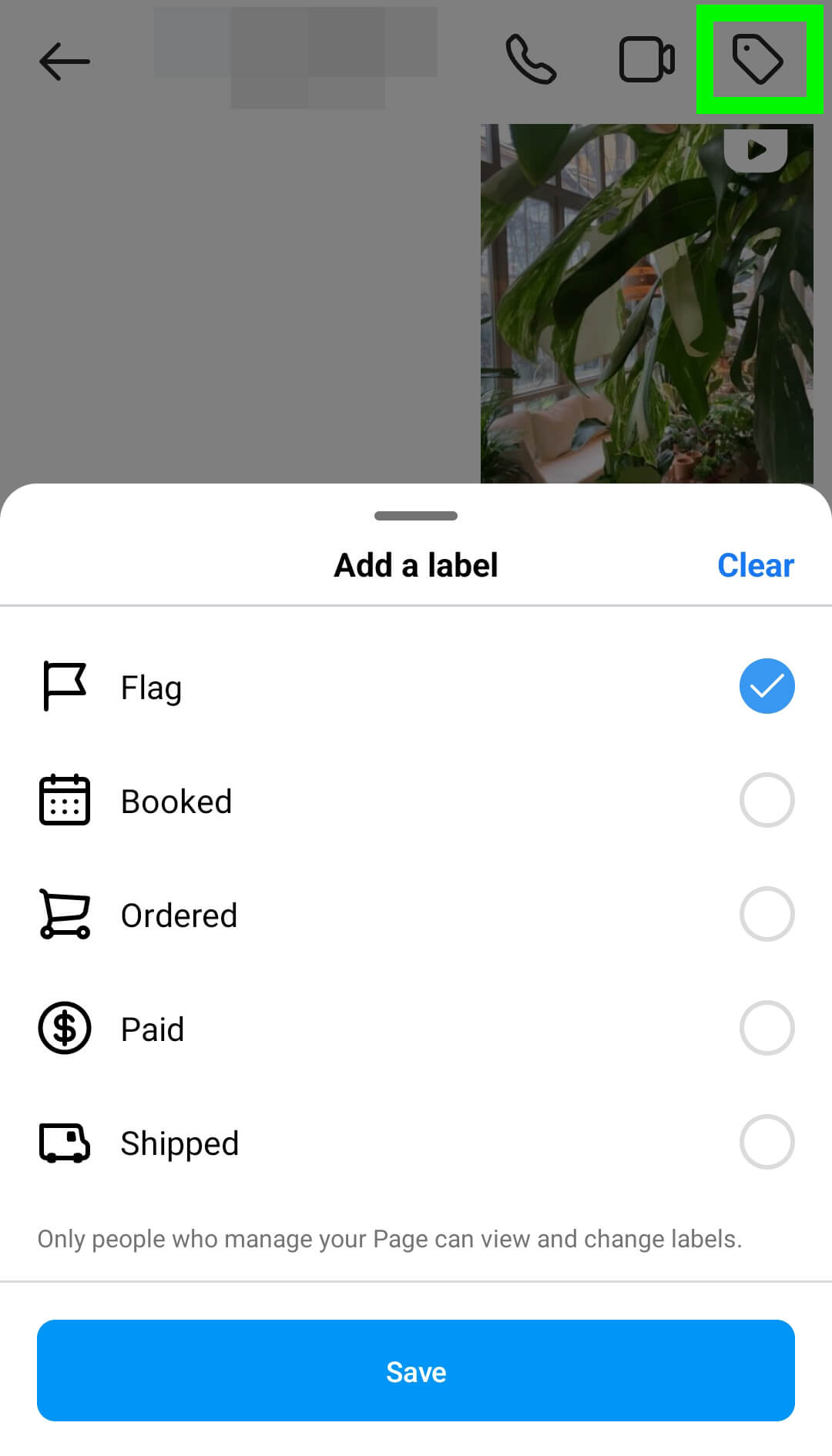
For more complex organization, use Meta Business Suite to add custom labels, enter contact information, and write internal notes.

#3: Instagram Sales Funnels Stage 3: Content to Get Your Audience to Convert
By publishing helpful resources and building relationships in DMs, you can gradually guide prospects further along in their customer journey. Once they’ve arrived at the bottom of the funnel, it’s time to focus on conversions.
Shoppable Instagram Content
If your brand has an Instagram shop, the easiest way to get conversions is to add product tags to your content. Since Instagram supports product tags in stories, posts, reels, and livestreams, you have tons of opportunities to drive conversions.
For example, the @fitbit post below features product tags that customers can tap to shop the brand’s smartwatches. The brand also uses shoppable story highlights to showcase new items and drive additional sales.
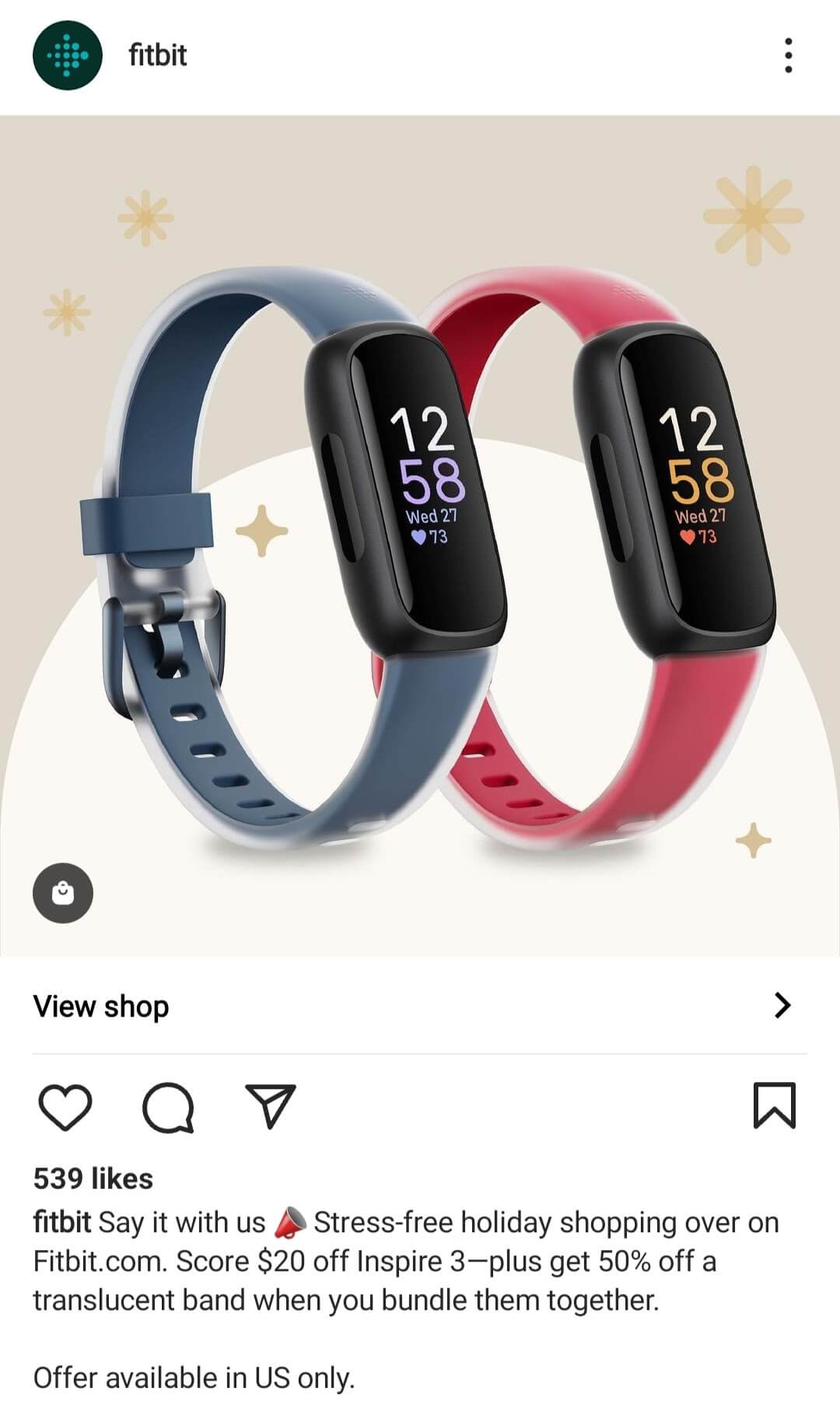
Conversion and Sales Tactics
Your middle-of-funnel content has already convinced prospects to strongly consider your brand. So how can you encourage them to take the next step and make a purchase?
Sales tactics like limited-time offers and limited-quantity product launches are ideal for creating a sense of urgency and getting prospects to act. To drive sales, you can also offer complimentary items like free shipping or loss leaders like big discounts on gateway products and services.
For example, the @simpleselfco post below includes a discount that’s likely to appeal to cost-conscious customers. The caption also mentions a related offer designed for customers who are looking for even more exclusive discounts and ideal for building out the planner brand’s funnel at the same time.
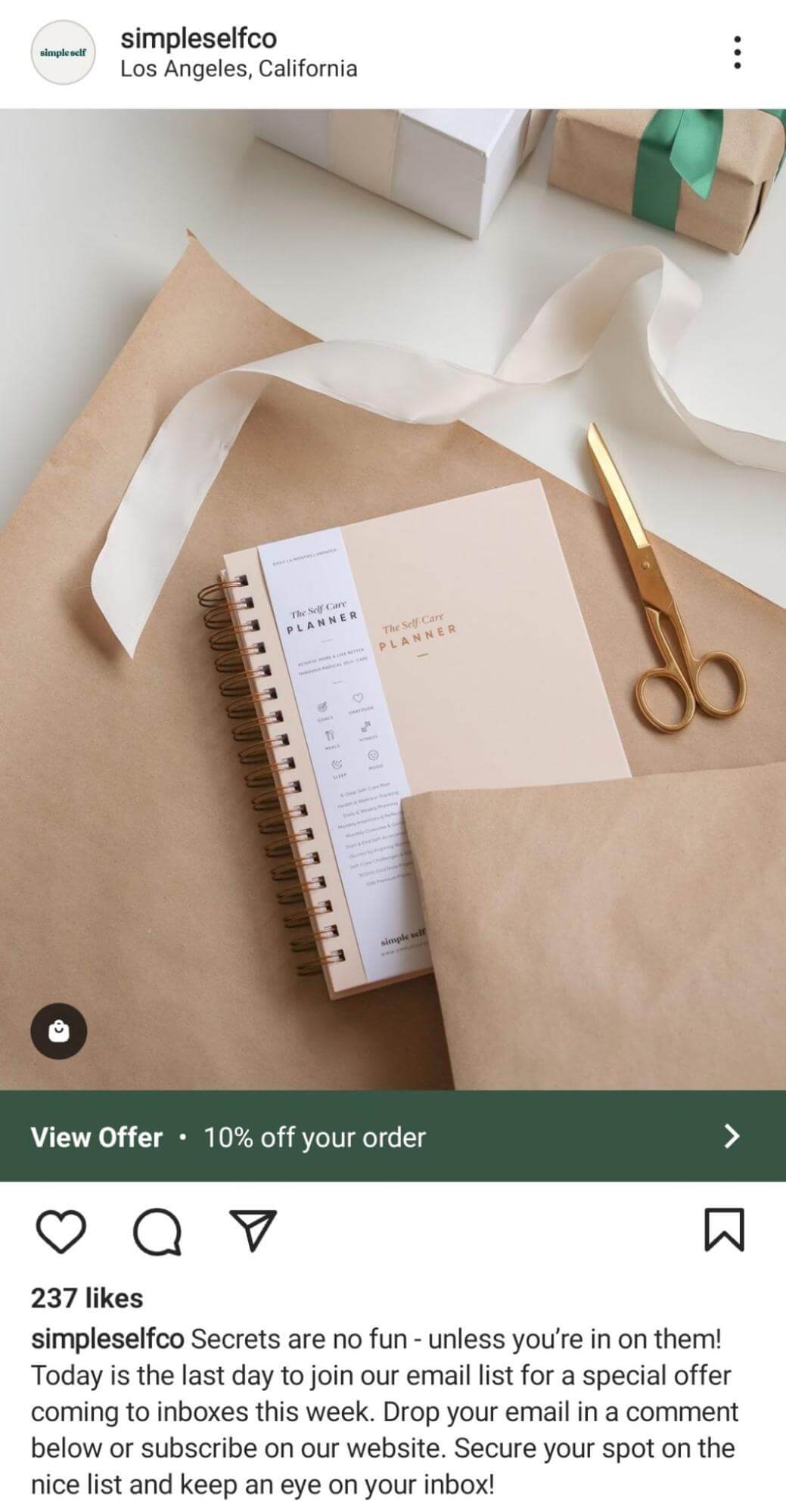
Link Stickers and Links in Bio
Your content can still generate sales even if you don’t have an Instagram shop. Use your mobile-friendly landing page to guide customers to shoppable items or service subscriptions and add CTAs in feed content to point people in the right direction. In stories, use link stickers that prospects can tap to shop or book a sales call.
Curious how helpful these conversion campaigns can be? By adding UTM codes to your URLs, you can track website visitors, conversions, and even eCommerce revenue. Use the Google Analytics Campaign URL Builder to get started creating trackable URLs for every external link, from your link in bio to your link stickers.
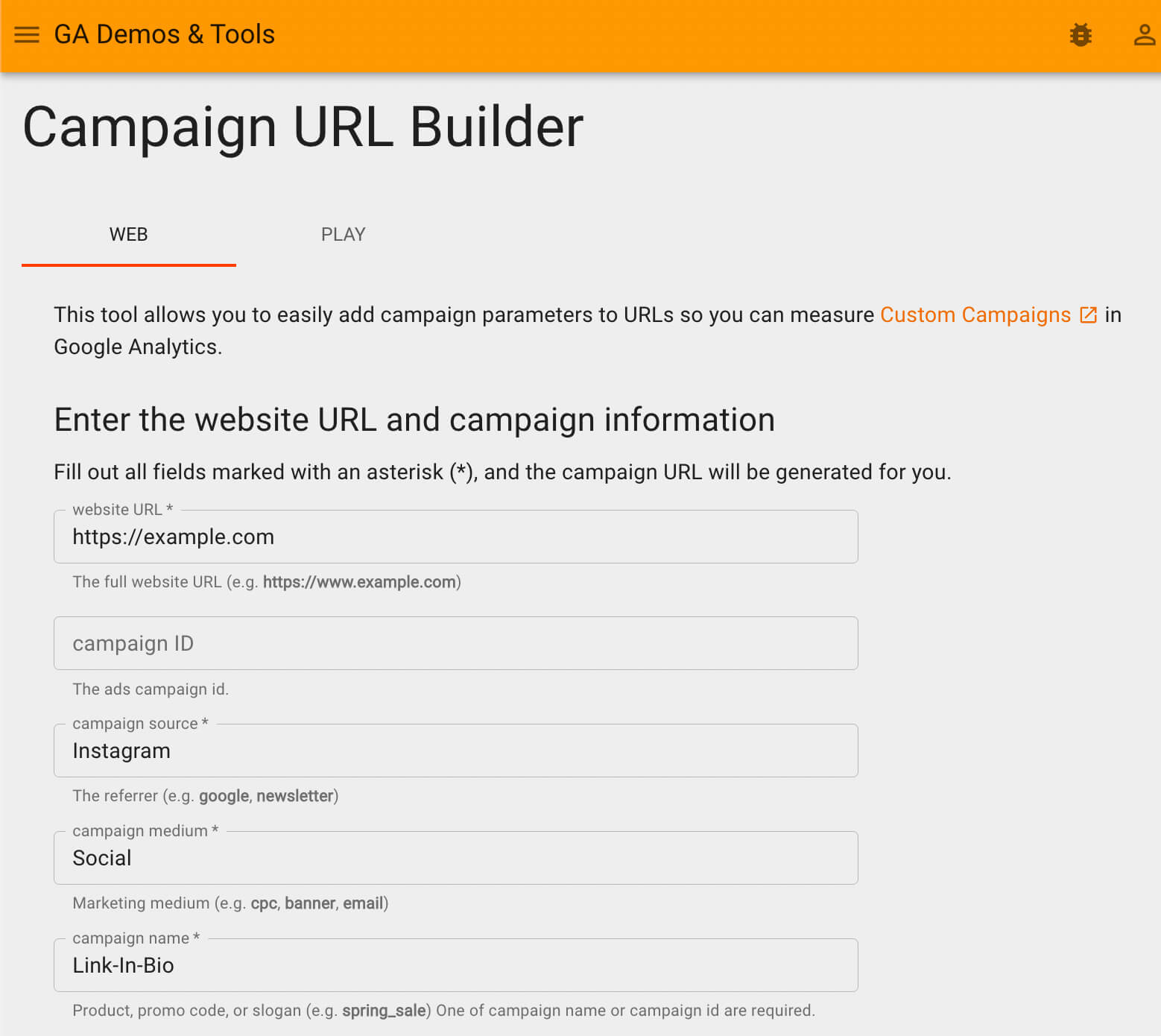
Have high-intent prospects flagged in your DMs? In DMs, you can also share trackable links to products, services, or special offers. That way, you can continue to nurture relationships while attributing conversions and measuring the value of your efforts accurately.
#4: Instagram Sales Funnels Stage 4: Encourage Repeat Purchases
Whether your business sells consumable products, renewable subscriptions, or updated versions, you need a way to turn one-time customers into return buyers. Now it’s time to cultivate loyal customers.
Exclusive Customer Discounts
Not every discount your business offers has to be available for absolutely everyone. With exclusive discounts, you can reward current customers and incentivize them to make additional purchases.
You could reach out to your VIP email list but there’s a better way to reinforce relationships on Instagram. Use DM labels to find your current customers and reach out to them by sending a promo code in DMs.
New Product Launches
Introducing new products and bundling existing items are both great ways to cross-sell to existing customers. For example, in the post below, @sleepymountain offers a recurring special: mystery boxes with bundles of discounted items.
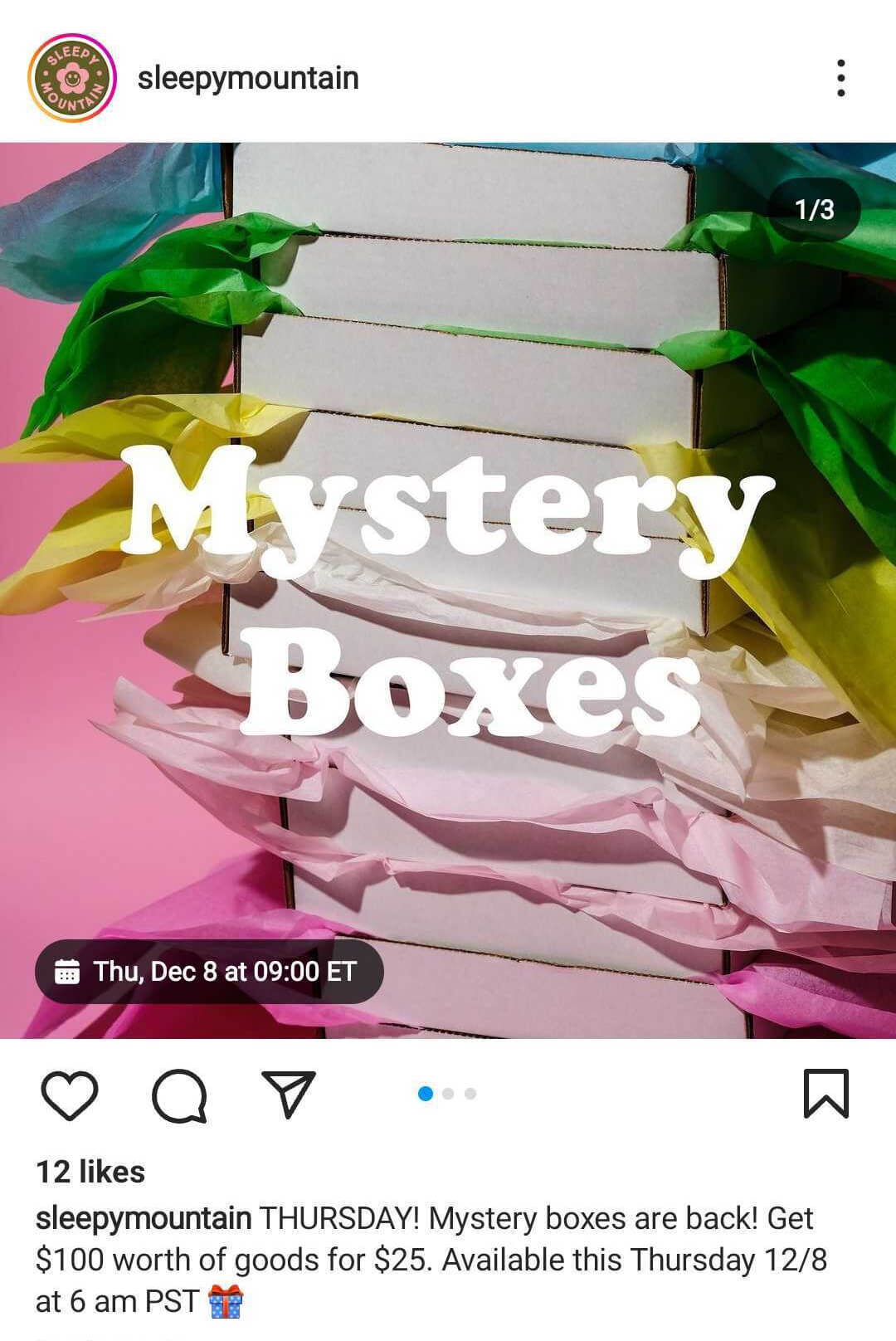
To drive engagement, the design studio uses Instagram’s Reminder feature. Customers can tap to get a notification when the mystery boxes are live so they don’t miss out on the limited-quantify offer.
Social Proof
To turn your best customers into brand advocates, use comments and DMs to nurture your relationship. To make it mutual, follow them back and engage with their content just like you would with paid influencers.
As you interact with customers, encourage them to share their thoughts and experiences on Instagram. If they provide testimonials, reviews, or user-generated content, ask for permission to share. Then give your VIP customers a shout-out while sharing social proof with your audience.
For example, the @leaffilter post below features a testimonial from a happy customer. The rave review recommends the business and taps into real customer challenges and goals, providing convincing social proof that can convert new prospects.

Conclusion
It’s easy to assume that Instagram ads are necessary for selling on Instagram. But with these tactics, you can build a successful sales funnel without the need for paid campaigns. By fostering each stage of the sales funnel, you can guide Instagram users from casual prospects to paying customers and eventually loyal advocates.
Stay Up-to-Date: Get New Marketing Articles Delivered to You!
Don't miss out on upcoming social media marketing insights and strategies! Sign up to receive notifications when we publish new articles on Social Media Examiner. Our expertly crafted content will help you stay ahead of the curve and drive results for your business. Click the link below to sign up now and receive our annual report!
Attention Agency Owners, Brand Marketers, and Consultants

Introducing the Marketing Agency Show–our newest podcast designed to explore the struggles of agency marketers.
Join show host and agency owner, Brooke Sellas, as she interviews agency marketers and digs deep into their biggest challenges. Explore topics like navigating rough economic times, leveraging AI, service diversification, client acquisition, and much more.
Just pull up your favorite podcast app, search for Marketing Agency Show and start listening. Or click the button below for more information.

